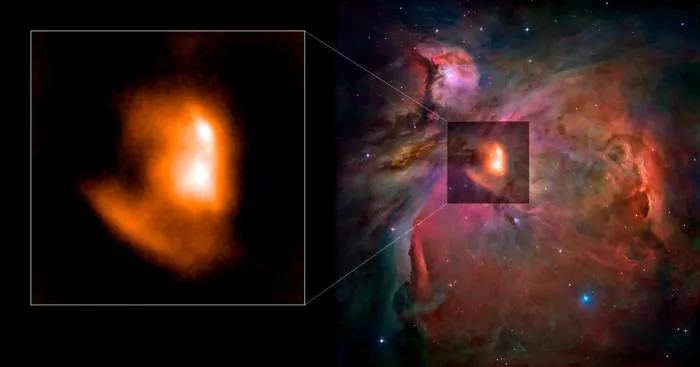
Revolutionizing the Cosmos: MISTRAL's Groundbreaking Impact on High-Frequency Radio Astronomy
2025-05-30
Author: Mei
A New Era in Cosmic Exploration
High-frequency radio astronomy is undergoing a radical transformation with the advent of MISTRAL, a cutting-edge multi-pixel receiver recently commissioned on the Sardinia Radio Telescope (SRT). This revolutionary instrument, born from collaboration between Sapienza University of Rome and the National Institute for Astrophysics (INAF), promises to enhance our understanding of the universe's most mysterious phenomena, heralding an exciting future in space exploration.
Unleashing the Power of Multi-Pixel Imaging
MISTRAL—an acronym for MIllimetric Sardinia radio Telescope Receiver based on Array of Lumped elements kids—represents a monumental leap in radio receiver technology. Unlike traditional "mono-pixel" receivers that require laborious scans to construct images, MISTRAL utilizes a remarkable matrix of 415 Kinetic Inductance Detectors (KIDs). With its core cooled to an astonishing -273.15 degrees Celsius, this high-density configuration enables MISTRAL to capture detailed images of weak cosmic sources much more quickly.
The Journey to 'First Light': Overcoming Technical Challenges
The successful installation of MISTRAL in May 2023 was a significant milestone that pushed the SRT to its performance limits. Achieving the extremely low temperatures necessary for the operation of its KIDs was one of the many challenges faced by the commissioning team. "Commissioning turns into a real challenge for a millimetre-wave receiver like MISTRAL," explains Matteo Murgia, Scientific Manager at INAF. After months of rigorous testing and calibration, including fine-tuning the SRT's surface, MISTRAL was finally ready for its first astronomical observations.
Unveiling the Cosmos: MISTRAL's Initial Discoveries
MISTRAL's inaugural observations have already showcased its incredible capabilities. In December 2024, it provided stunning images of the Orion Nebula (M42), revealing detailed structures within one of the closest star-forming regions to Earth. The February 2025 observations of the radio galaxy M87 highlighted the intricate structures connected to its supermassive black hole, providing deeper insights into the jets powered by its energetic nucleus. By April 2025, MISTRAL captured breathtaking images of Cassiopeia A, a supernova remnant known for its intense radio emissions, allowing astronomers to appreciate its filamentary gas structures.
A Cosmic Milestone: Expanding Horizons for Radio Astronomy
The successful 'first light' observations mark a significant leap forward for both MISTRAL and the Sardinia Radio Telescope. "The achievements of this milestone will broaden the scientific horizons of the telescope," stated INAF's Scientific Director, Isabella Pagano. As MISTRAL transitions into its scientific validation phase, it is set to address a wide range of astronomical inquiries, from the mysteries of galaxy clusters to star formation in molecular clouds and beyond. The commissioning team is dedicated to ensuring MISTRAL becomes an indispensable tool for the global scientific community, paving the way for a bright future in high-frequency radio astronomy.


 Brasil (PT)
Brasil (PT)
 Canada (EN)
Canada (EN)
 Chile (ES)
Chile (ES)
 Česko (CS)
Česko (CS)
 대한민국 (KO)
대한민국 (KO)
 España (ES)
España (ES)
 France (FR)
France (FR)
 Hong Kong (EN)
Hong Kong (EN)
 Italia (IT)
Italia (IT)
 日本 (JA)
日本 (JA)
 Magyarország (HU)
Magyarország (HU)
 Norge (NO)
Norge (NO)
 Polska (PL)
Polska (PL)
 Schweiz (DE)
Schweiz (DE)
 Singapore (EN)
Singapore (EN)
 Sverige (SV)
Sverige (SV)
 Suomi (FI)
Suomi (FI)
 Türkiye (TR)
Türkiye (TR)
 الإمارات العربية المتحدة (AR)
الإمارات العربية المتحدة (AR)